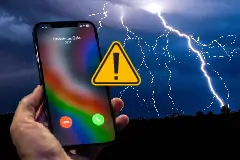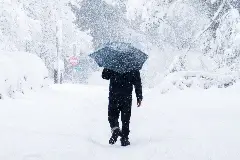Thunderstorms with Hail: Are You Prepared for Nature’s Frozen Projectiles?
What Would You Do if Hail Suddenly Started Raining Down? Have you ever been outside on a beautiful summer day when suddenly… whack! Ice starts falling from the sky? Or maybe you’ve seen these: cars riddled with dents, roofs looking like they’ve been attacked by a giant golf ball. I’m talking about hail, of course, and it’s not just annoying – it can be seriously destructive. Have you ever wondered how these icy projectiles form, or more importantly, how to protect yourself and your stuff when they start raining down?

I've been caught in a sudden hailstorm before, wondering what to do. That’s why I wanted to break down everything you need to know about these crazy weather events: what they are, why they’re dangerous, and how to stay safe.
What Exactly Are These Hailstorms?
Basically, a hailstorm is just a thunderstorm that throws out ice instead of rain. It happens when strong winds inside the storm push raindrops way up high into the cold part of the atmosphere. Up there, they freeze into ice. These ice pellets, or hailstones, keep getting tossed around in the storm, collecting more water that then freezes onto them, making them bigger and bigger until they get too heavy and fall to the ground. These storms don't usually last super long, but they can be really intense while they're happening.
Why Should You Be Worried About Hail?
Well, hail can cause a lot of problems:
It can wreck your stuff: Hail can break windows, dent your car, and even damage your roof. Think about it: little balls of ice pelting your belongings at high speed. Not good.
It can really mess up your car: Dents, cracked windshields, you name it. Hail can do a number on your vehicle.
It can ruin crops: Farmers and gardeners dread hail because it can destroy all their hard work in a matter of minutes.
It can even hurt you: If the hailstones are big enough, they can cause bruises, cuts, or even concussions if you get caught outside.
How Do You Stay Safe When Hail Starts Falling?
Here's the lowdown:
At home: Bring anything that could get damaged inside – like patio furniture or potted plants. Close your windows and shutters. If the hail is really big, the safest place is in a basement or an interior room away from windows.
In your car: If you're driving and it starts hailing, try to find a safe place to pull over, like under an overpass or in a parking garage. Try to keep your windshield clear so you can see. And definitely don't drive through flooded areas that might have formed because of the rain and hail.
If you're caught outside: If you can't find shelter, try to protect your head with whatever you have – a jacket, a bag, anything. The most important thing is to get indoors as soon as possible.
Is There an Useful tool for That?
You bet! There are apps that can actually help you track hailstorms. One I've used is called HailTrack. It gives you real-time alerts about where hail is expected and even shows you maps of where hail has hit in the past. It can also give you tips on how to protect your stuff. Pretty cool, right?
Always Be Prepared for Hailstorms
Thunderstorms with hail or what most people called Hailstorms are among the most unpredictable and dangerous weather events. It can be scary, but being prepared can make a big difference. With the HailTrack app, you can track the storm’s path and prepare in advance to protect your property. Don’t let hail take you by surprise—make sure your home, car, and crops are covered by the right insurance so that, even when the storm hits, you can weather it with peace of mind.


